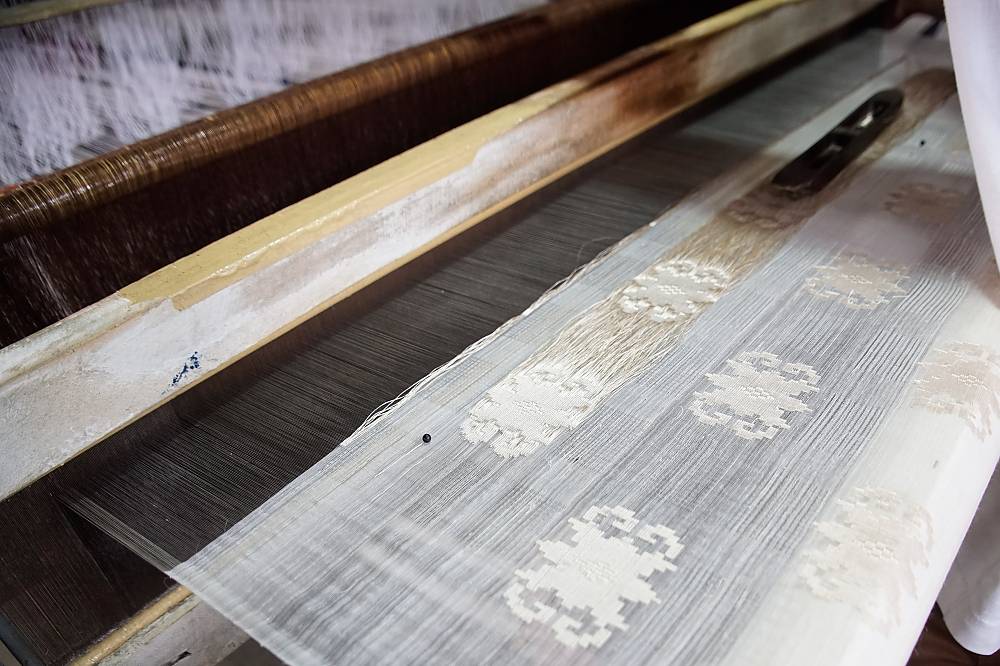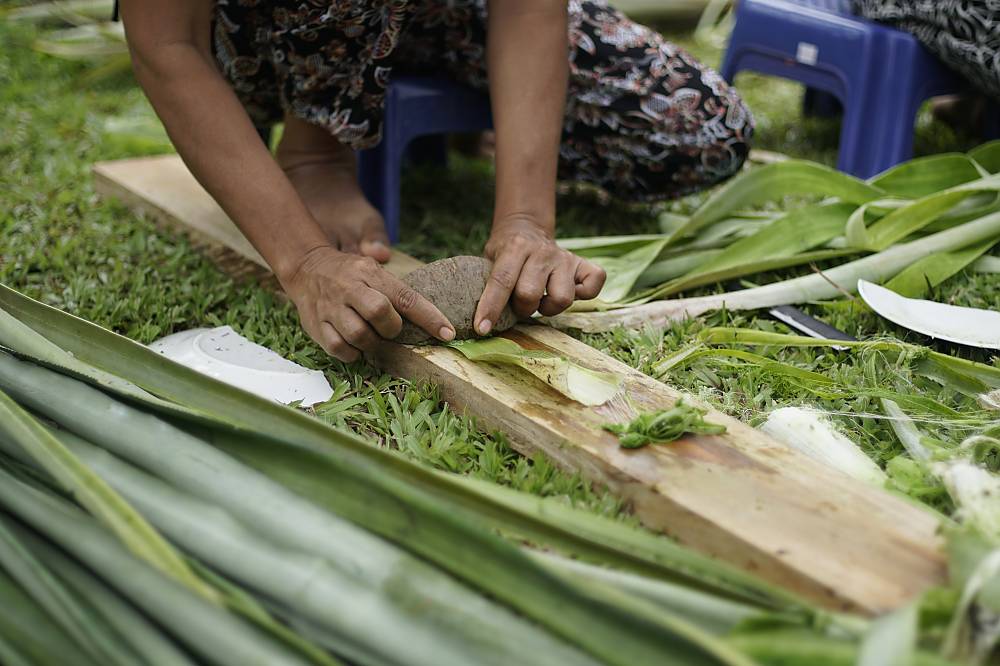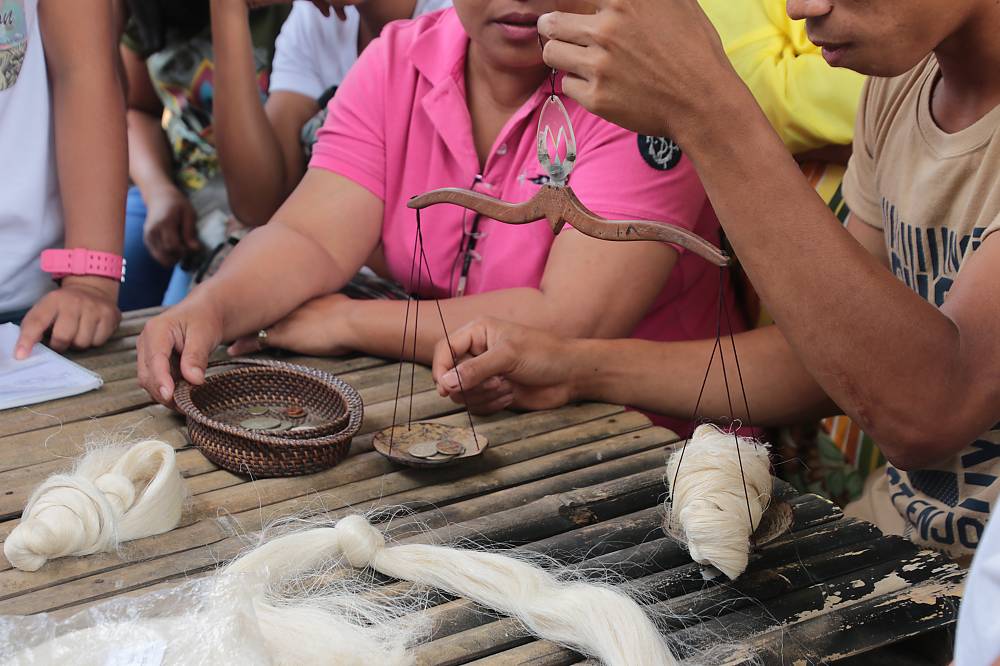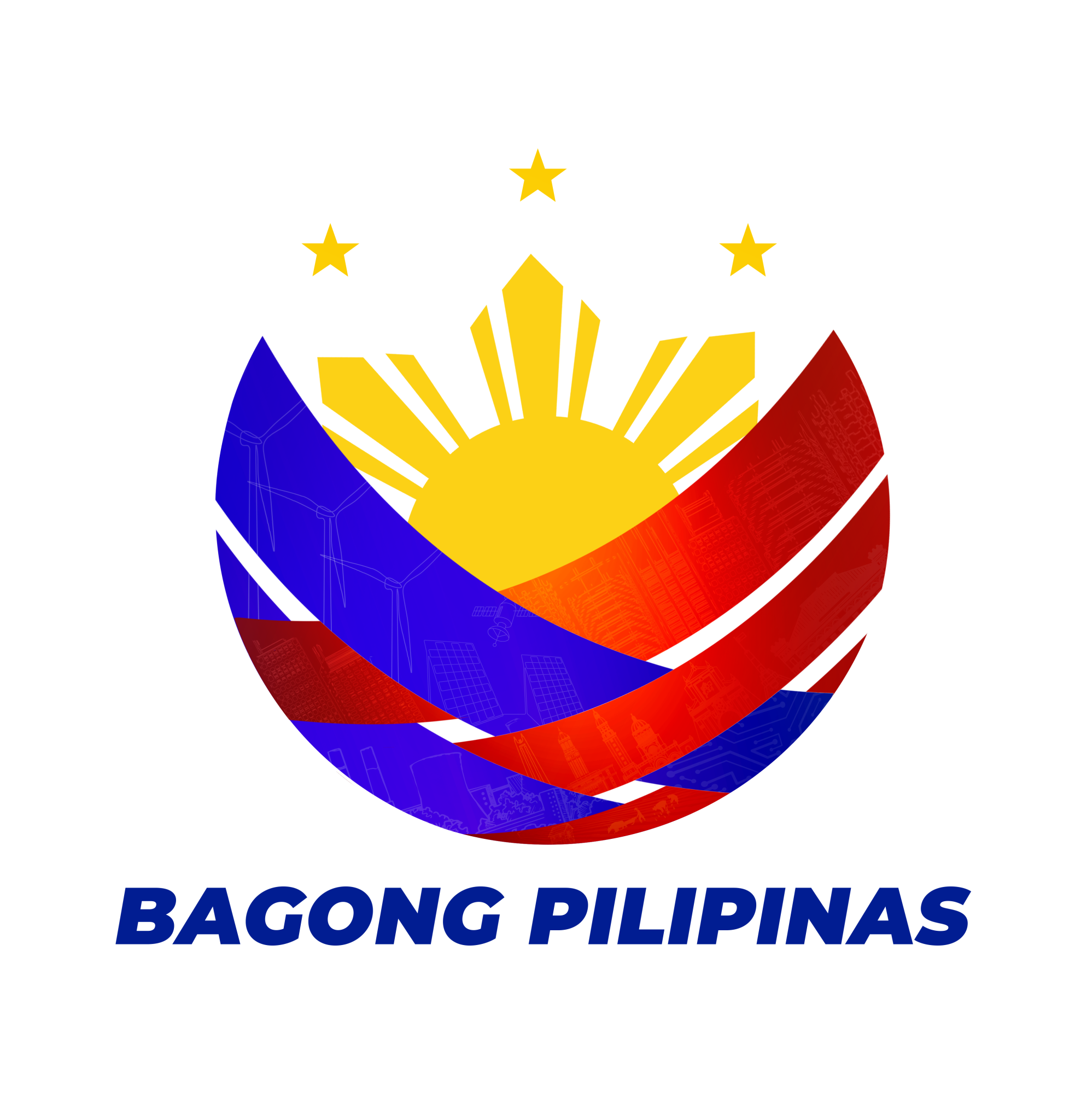Philippines’ Piña Handloom Weaving Inscribed on UNESCO Representative List of the Intangible Cultural Heritage of Humanity

Photo courtesy of National Commission for Culture and the Arts
PARIS 06 DECEMBER 2023 – Piña Handloom Weaving was inscribed on the UNESCO Representative List of the Intangible Cultural Heritage (ICH) of Humanity at the ongoing 18th Session of the Intergovernmental Committee for the Safeguarding of ICH in Kasane, Botswana.
Piña handloom weaving is practiced in the province of Aklan in Panay Island in the Visayas region of central Philippines, where it originated. Presently, farming of the pineapple plant locally known as “pinya Bisaya” (Ananas comosus), the main source of piña fiber, takes place in 15 municipalities: Altavas, Balete, Banga, Batan, Buruanga, Kalibo, Lezo, Libacao, Madalag, Makato, Malay, Malinao, Nabas, Numancia, and Tangalan.
The bearers and practitioners of the Piña handloom weaving have been transmitting their knowledge of handloom weaving to weavers of nearby provinces of Antique and Capiz in Panay Island; Leyte; Camarines Sur; and Palawan. The knowledge and skills of Piña handloom weaving are primarily passed on from elders to the young family members.
UNACOM Secretary-General/ NCCA Commissioner Dr. Ivan Anthony Henares represented the Philippines in Botswana. He introduced a pre-recorded video following the inscription. Philippine Ambassador to France and Permanent Delegate to UNESCO H.E. Junever M. Mahilum-West, National Commission for Culture and the Arts (NCCA) Chairperson Victorino Mapa Manalo, Aklan Governor Jose Enrique Miraflores, and the members of the local community, extended their profound gratitude to UNESCO, ICH Committee, as well as the Evaluation Body, and welcomed the recognition of Piña Handloom Weaving in the ICH Representative List of Humanity.
“The Philippines is the only country that extensively produces piña cloth in the whole world. The pineapple textiles or piña are part of the diverse traditional weaving practices of the Philippines. They stand out as national cultural icons symbolizing ingenuity, craftspersonship, and social cohesiveness as well as shared values of our communities. We wholeheartedly express our gratitude for this recognition which inspires us to safeguard their heritage and affirms the importance of our contribution to the richness of human creativity,” the Chairperson added.
The Piña Handloom Weaving is the Philippines’ sixth element inscribed in the Lists of Intangible Cultural Heritage, others namely: the Hudhud chants of the Ifugao (2008), the Darangen epic of the Manarano people of Lake Lanao (2008), the Tugging rituals and games (2015), the Buklog– thanksgiving ritual system of the Subanen (2019), and the School of Living Traditions (2021). END

Photo courtesy of National Commission for Culture and the Arts

Photo courtesy of National Commission for Culture and the Arts
For more information, visit https://www.parispe.dfa.gov.ph, http://www.facebook.com/PHinFrance, https://twitter.com/PHinFrance or https://www.instagram.com/phinfrance/.

